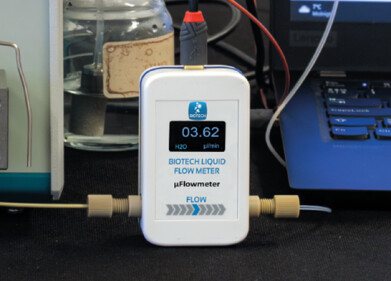HPLC, UHPLC
Can Chromatography Detect Coffee Adulteration?
Apr 25 2020
Coffee is said to be the most popular drink worldwide. Around 2 billion cups are consumed every day. The British Coffee Association estimates that consumers in the UK drink 95 million of those cups per day. Coffee drinking is good for the economy too with over 200,000 UK jobs involved in some capacity with coffee drinking. As 16% of people visit a coffee shop on a daily basis it is easy to see coffee’s importance to the UK’s economy.
But like all consumables that can command a decent profit there are always people who will try and make a quick buck. Why should coffee be any different? There have been instances where cheap coffee has been used in place of more expensive coffee. There are even stories of barley and wheat being used as filler in coffee grounds. A recent paper published in Foods reports on a study in Spain that used chromatography to detect coffee adulteration.
Food fraud
The determination of food authenticity is an important quality control issue. Although adulteration might be carried out for economic gain, it can have an impact on food safety with numerous news articles reporting on contaminated baby milk and rice leading to health scares and even deaths. The food chain from grower to retail shop is complex and very long in many instances, therefore there are many opportunities for adulteration to take place.
Coffee is a simple drink to make. Ground coffee and water at just the right temperature are all that is needed for a delicious cup. But behind that simple façade is a complex bean that must be of the right variety, grown in the right place and roasted at precisely the correct temperature for just the right amount of time. There are two main types of coffee beans, Robusta and Arabica, with Arabica being used to make most of the premium brews of coffee.
HPLC-UV analyses the bean
The work carried out by the researchers in Spain and reported in the Foods paper looked at developing a strategy to detect fraud in coffee. The team developed a simple and highly efficient high-performance liquid chromatography with UV-detection (HPLC-UV) to assist them. The use of chromatography in food analysis is the topic of the article, Vacuum Assisted Headspace Solid-phase Microextraction: A Powerful Tool for Olive Oil Analysis.
The HPLC-UV method developed by the team was for the characterization, classification, and authentication of coffee samples according to the production regions, the coffee variety, and the roasting degree. The method developed was determined to be good at determining the chemical descriptors needed for the characterization and classification of various coffee samples.
Yet another way that chromatography can help to keep our food safe from fraud.
Digital Edition
Chromatography Today - Buyers' Guide 2022
October 2023
In This Edition Modern & Practical Applications - Accelerating ADC Development with Mass Spectrometry - Implementing High-Resolution Ion Mobility into Peptide Mapping Workflows Chromatogr...
View all digital editions
Events
ACS National Meeting - Fall 2024
Aug 18 2024 Denver, CO, USA
Sep 04 2024 Chiba, Tokyo, Japan
Sep 04 2024 University of Warwick, Coventry, UK
Sep 10 2024 Rockville, MD, USA
Plastics Recycling World Expo Europe
Sep 11 2024 Brussels, Belgium














